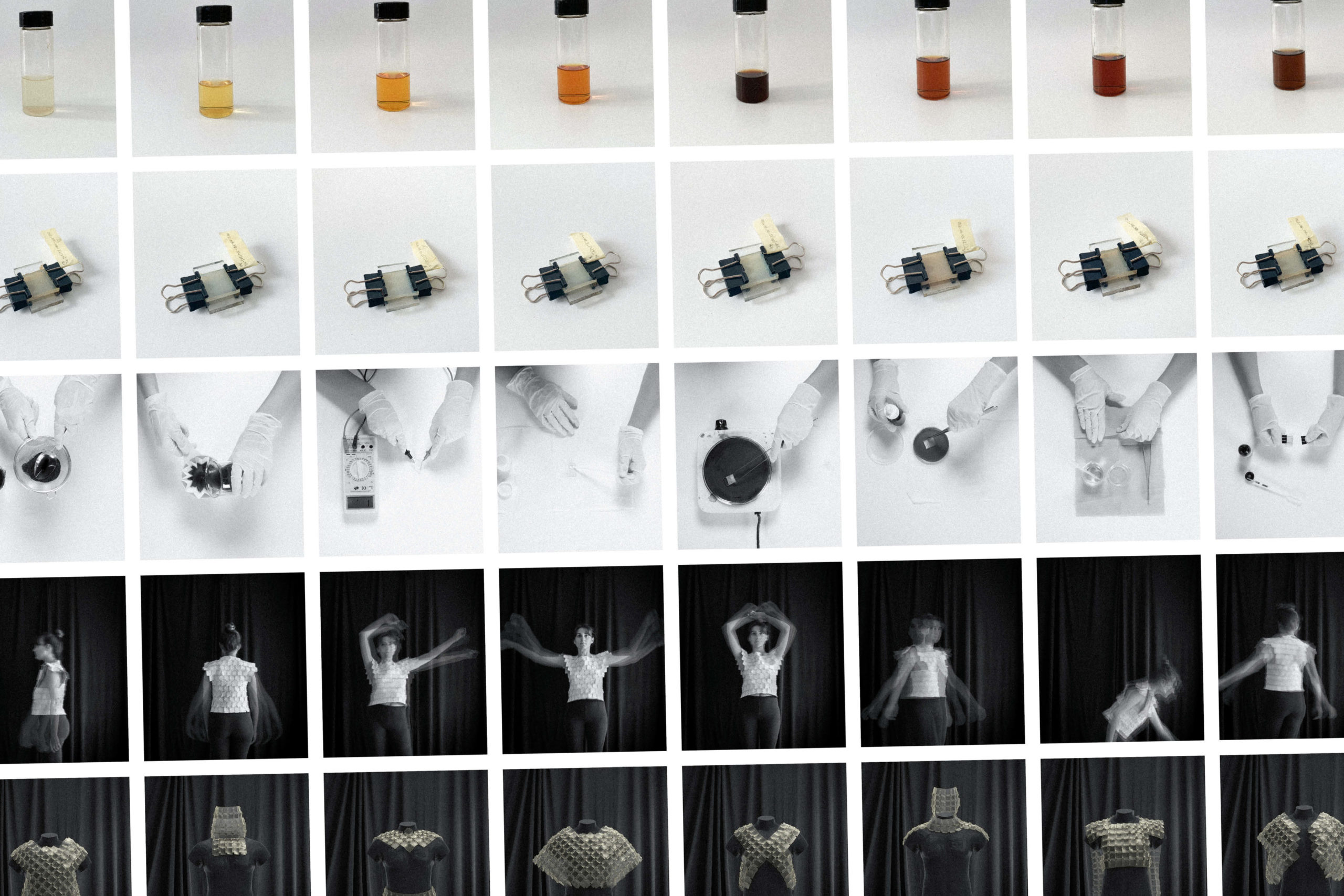Photodermis | Gemma Morell

Useful information
- Team members
- Country
- —
- Keywords
- -
Detailed Description
Photodermis is a renewable energy system designed as a garment for the human body. It is based on the technology of Gräetzel solar cells, and it is modular, biodegradable, malleable and can be locally produced. It produces energy from light haversting.
Project Details
- Does your design take social and cultural challenges and human wellbeing into consideration?
Photodermis is collaborative since it is expected to be produced with the participation of citizens or the final user in the digital fabrication centers. Moreover, Photodermis is a modular garment, based on the shape of one cell and the union that needs to be done between cells. Thus, citizens can explore new shapes and customize their unique garment as they like and fit. No body sizes or genders need to be pre-defined or stablished for the garment fit all human bodies.
- Does your design support sustainable production, embodying circular or regenerative design practices?
Photodermis is regenerative from its concept to the end-of-life of the product. First, it proposes a new renewable energy system from an ecocentric point of view. This means it doesn’t work due to the colonization of huge spaces of land that we, as humans, don’t owe (as the case of huge solar farms or eolic parks). But Photodermis understands the unique object we owe and which to design on and generate energy with is our own body. This is why Photodermis renewable energy is generated from a garment for the human body.
Then, Gräetzell solar cells are normally made of glass, or plastic film when wanted to make them malleable. But Photodermis cells are conceived from both Speculative Design and Industrial Ecology perspectives, and this is why its cells are proposed to be made from a conductive biopolymer of alginate, and an organic dye made from coffee waste. Selection of materials lowers the environmental impact of Photodermis, comparing to other solar cells, while making the technology biodegradable at its end-of-life. Local production in digital fabrication centers and easy accessibility to materials also contribute on this.
Finally, Photodermis as a garment is conceived as a design for repairability and easy disassembly. If one cell doesn’t work, some of the unions between cells can be easily disassembled, with no technique tools. And the cell that has the problem can be replaced, without touching any other cell from the garment.
- Does your design use principles of distribution and open source?
Photodermis is open in terms that it is conceived to be co- and self-produced with digital fabrication techniques. Spaces as digital fabrication “ateneus” or centers are the ideal places to fabricate Photodermis.
To replicate Photodermis it is needed to fabricate a biopolymer and a dye from organic waste. The biopolymer should be dipped in the organic waste dye, and then laser cut to get the solar cells shape.
The recipe for the biopolymer and the organic dye is open source and can be online consulted, as well as the document that defines the shape of the cells that must be laser cut. Also, a whole document with instructions on how to assemble the materials to easily build every cell is provided and accessible for everyone.
- Does your design promote awareness of responsible design and consumption?
Photodermis is ecosystemic in terms that it has been designed from a systemic reflection of the socioecological crisis we are facing. Photodermis tackles socioecological problems relating to both the energy and the fashion industry, two of the most polluting ones. Photodermis improves the health of social and environmental systems as it is a more sustainable renewable energy system alternative: it is not only conscious with greenhouse gases emissions, but with terrestrial ecosystems. And at the same time, it generates a debate around the need, the objective and the use of fashion.
Images


